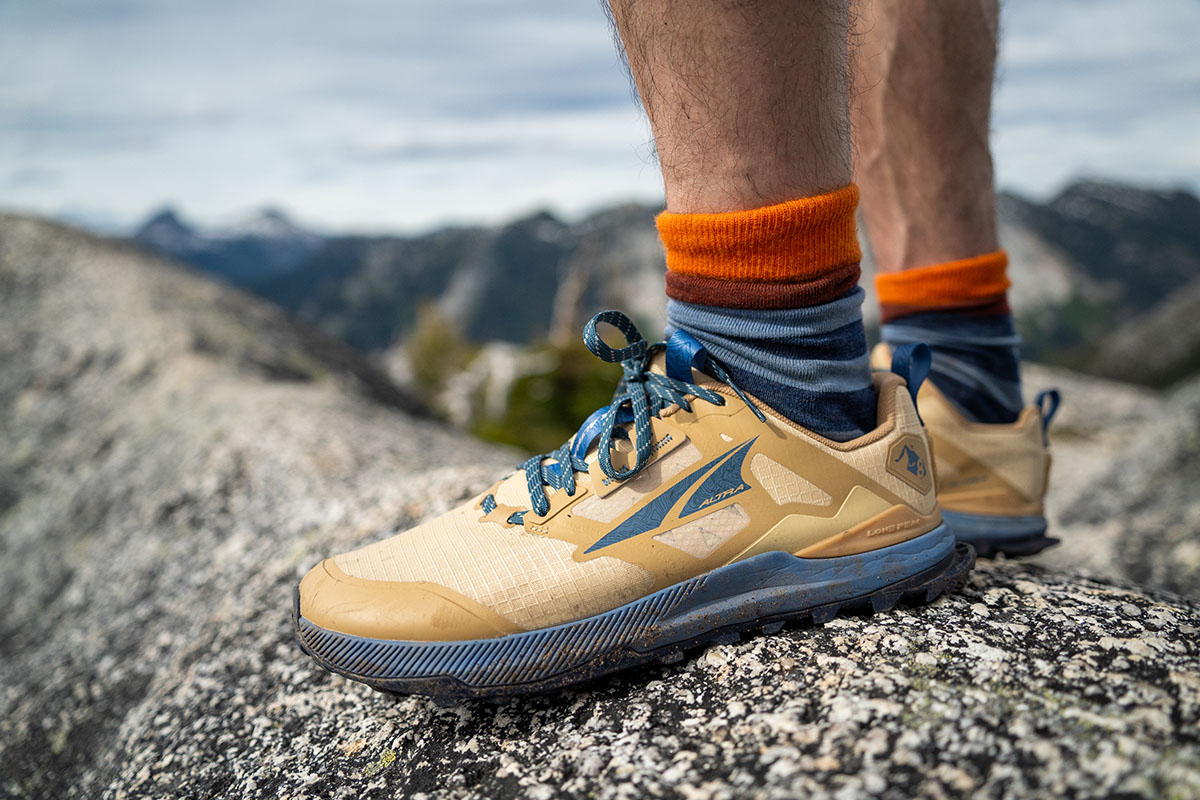
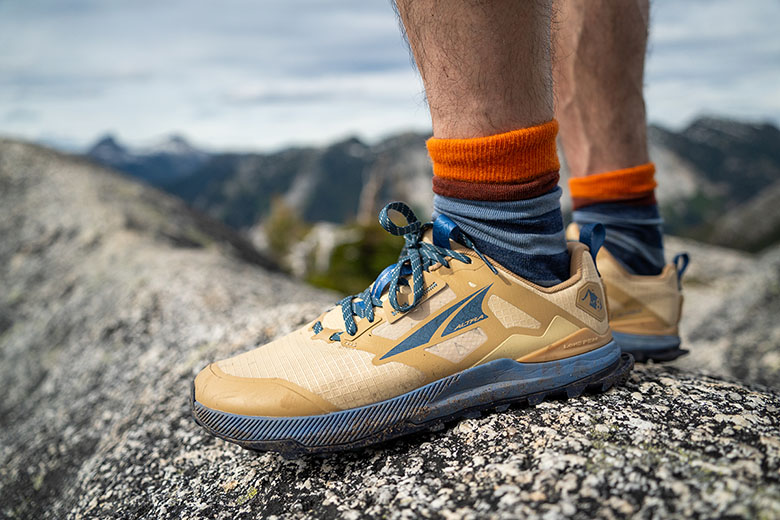
Price: $140
Weight: 1 lb. 5.4 oz. (men’s size 10)
Drop: 0mm
Cushioning: Moderate
What we like: An incredibly comfortable, spacious shoe for tackling long miles; more durable than the prior version.
What we don’t: Roomy fit results in a notable drop in precision on technical terrain; relatively sluggish for running.
See the Men's Altra Lone Peak 9 See the Women's Altra Lone Peak 9
Altra’s Lone Peak 8 has garnered a loyal following among thru-hikers and minimalist trail runners for its accommodating fit and excellent out-of-the-box comfort. Building off the success of the outgoing 7, the latest iteration retains the same roomy toe box, zero-drop shape, and moderate cushioning that have made the design so popular over the years. I recently put the Lone Peak 8 through a summer of backpacking and trail running in the Pacific Northwest and came away with mostly positive impressions. The comfort-first fit does have its downsides when the going gets technical, but long-distance hikers sticking to mostly established trails will find a lot to like. Below are my thoughts on the Lone Peak 8. To see how it stacks up in the market, check out our articles on the best trail running shoes and best hiking shoes.
The first thing that stood out about the Altra Lone Peak 8 was its plush and accommodating feel—I’d go so far as to say it’s more reminiscent of a slipper than a trail runner. For reference, I took the shoes out of the box and directly onto a 30-mile backpacking trip and was happy to find they required virtually no break-in period. Fit-wise, the shoes are roomy throughout with extra space at the toe box, which is a Lone Peak hallmark. Combined with Altra's signature zero-drop shape that positions the forefoot and heel the same distance from the ground, the Lone Peak promoted a very natural gait with no pressure points or areas of discomfort. Additionally, the ripstop mesh upper was both flexible and breathable enough that I was able to stay comfortable during long days of hiking in warm weather. Finally, while not the cushiest design, the 25 millimeters of padding underfoot kept my feet protected from harsh impacts while still allowing me to feel the trail below.
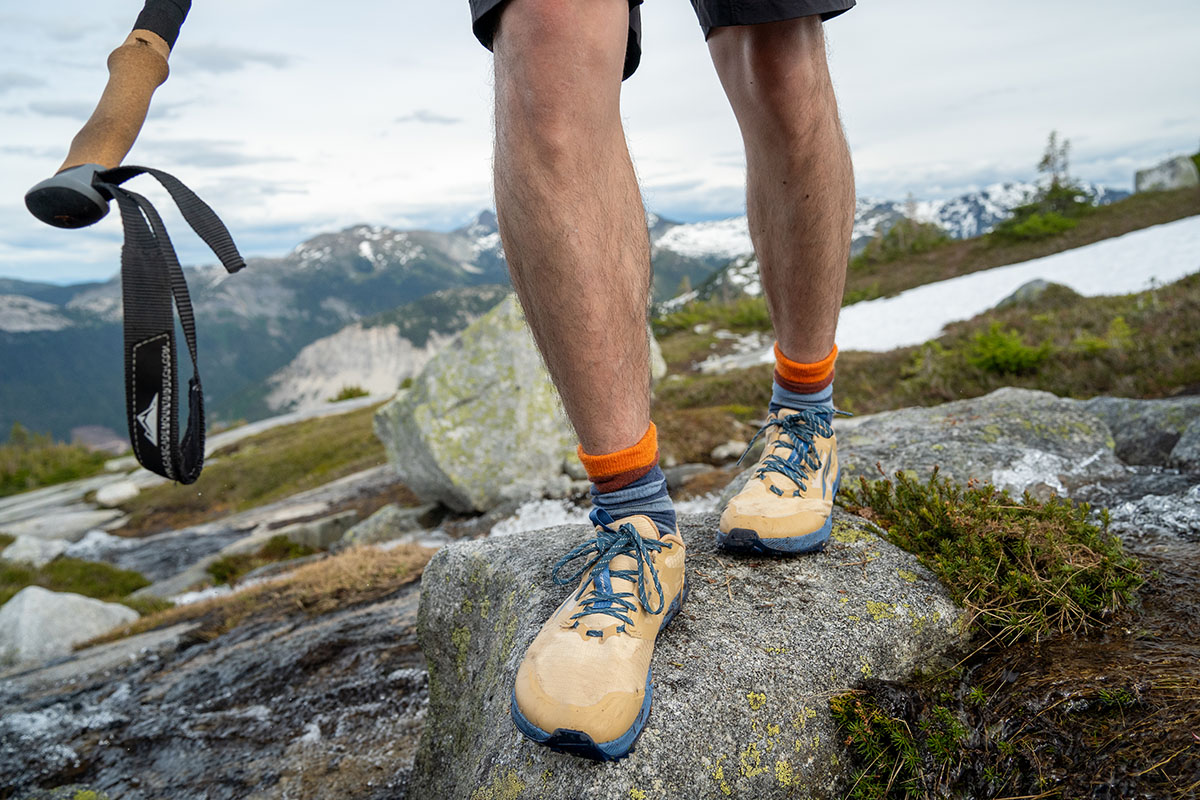
However, as soon as I ventured into more technical terrain, comfort began to suffer considerably. The biggest culprit is the roomy fit: No matter how tightly I laced the shoes, I wasn’t able to stop my foot from sliding around when traversing uneven slopes. Over time, this led to hotspots and pressure points at the sides of my feet. In other words, while the Lone Peak is supremely comfortable on established trails, the trade-off is significantly reduced precision when the going gets tough. A final complaint is that the midsole felt relatively dull and unresponsive while running—there’s a reason the shoe has become more popular for hiking.
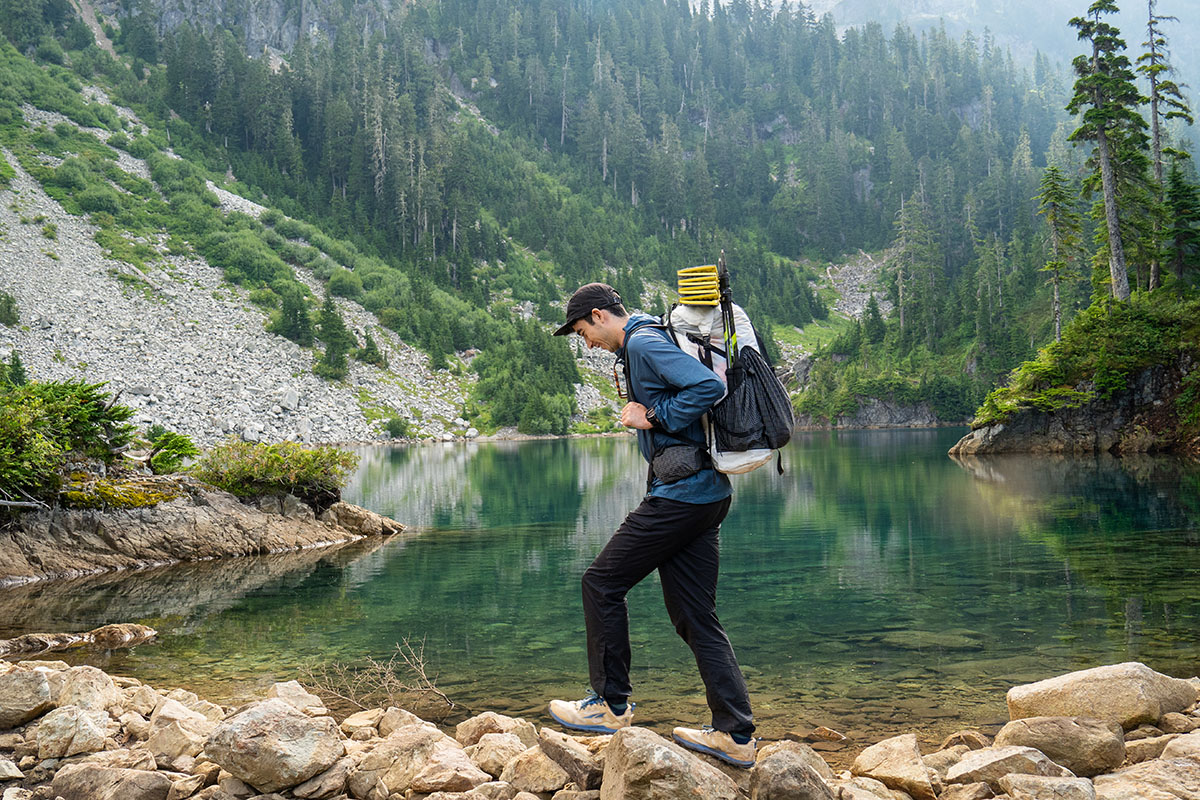
I would categorize the Lone Peak’s traction as good but not great. On the bright side, Altra’s MaxTrac rubber compound provided reliable grip on rocky and dusty trails, and I had no issues running downhill quickly provided the ground was dry. However, on damp to wet terrain, the shoes’ relatively shallow and generously spaced lugs resulted in a notable drop in traction. This was especially apparent when crossing wet logs or rocks, as well as when navigating muddy sections and patches of snow. Added up, the Lone Peak 8 is adequate for most fair-weather hiking and running, but it wouldn’t be my first choice for outings that involve consequential scrambling or potentially slick surfaces. For these uses, I’d opt for a shoe with a grippier Vibram outsole and/or a more aggressive lug pattern, like what you get with Altra’s own Olympus 6 or Hoka’s Speedgoat 6.
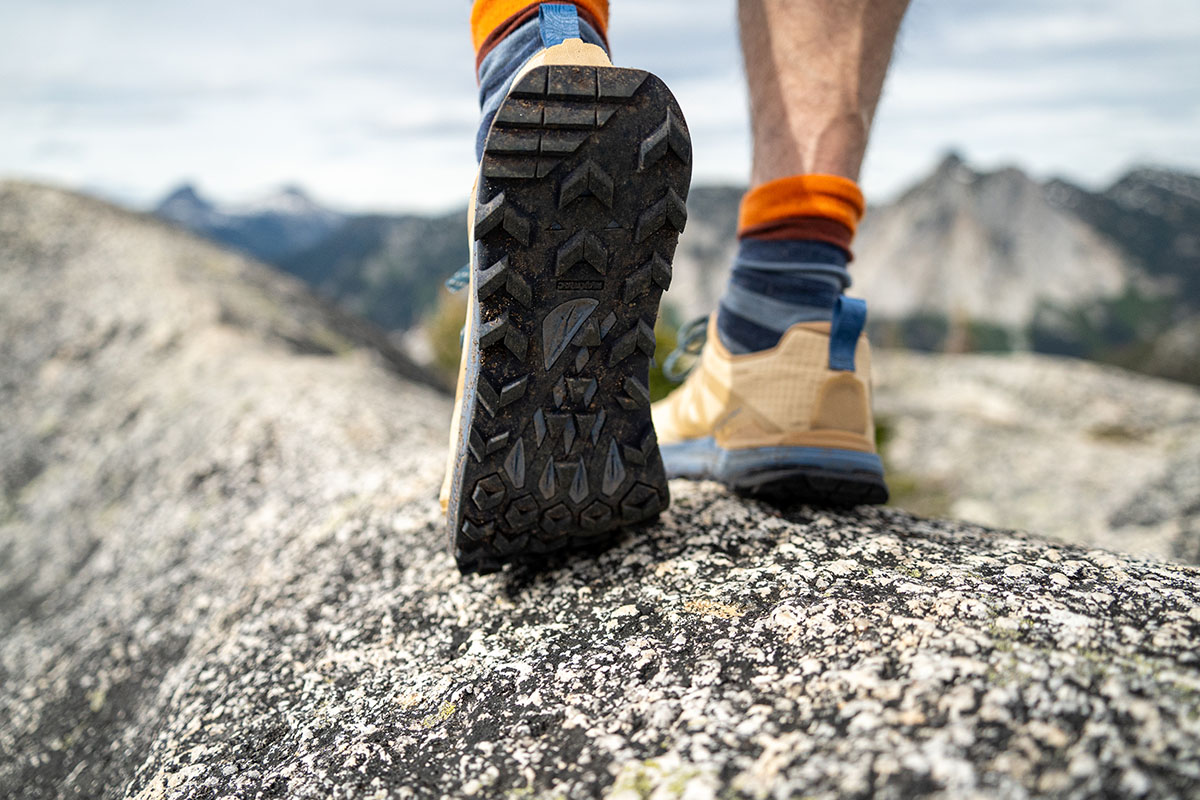
My size 10 pair of Lone Peaks checked in at 1 pound 5.4 ounces on my scale, which is identical to Altra’s listed weight and about average in the trail runner market. While not feathery like NNormal’s Kjerag (14.1 oz. per pair) or Hoka’s Tecton X 2 (1 lb. 1.6 oz.), the Lone Peak never felt cumbersome underfoot, even after accidental submersions that left them dripping with water. And the Lone Peak’s weight is even more impressive when stacked up against traditional hiking designs like the Keen Targhee IV Vent (2 lb. 4.1 oz.) or Oboz Sawtooth X Low (1 lb. 15.6 oz.).
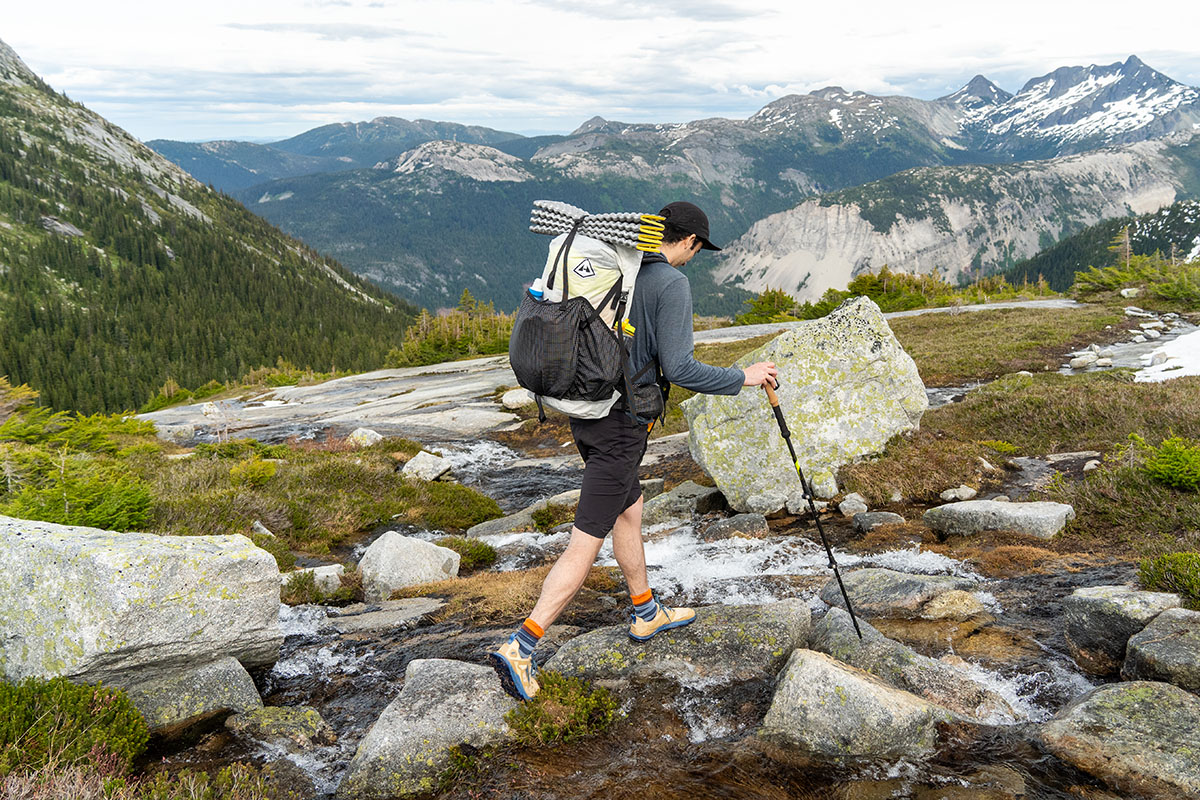
The Altra Lone Peak 8 is a mixed bag when it comes to stability and support. Starting with the good news, I found the shoes easy to trust on mellow to moderately technical terrain, even while wearing a 30-pound backpack. The flexible footbed contoured nicely to the trail, allowing for a good (but not too sensitive) ground feel, and the heel counter—while on the lower side—adequately locked in the back of my foot.
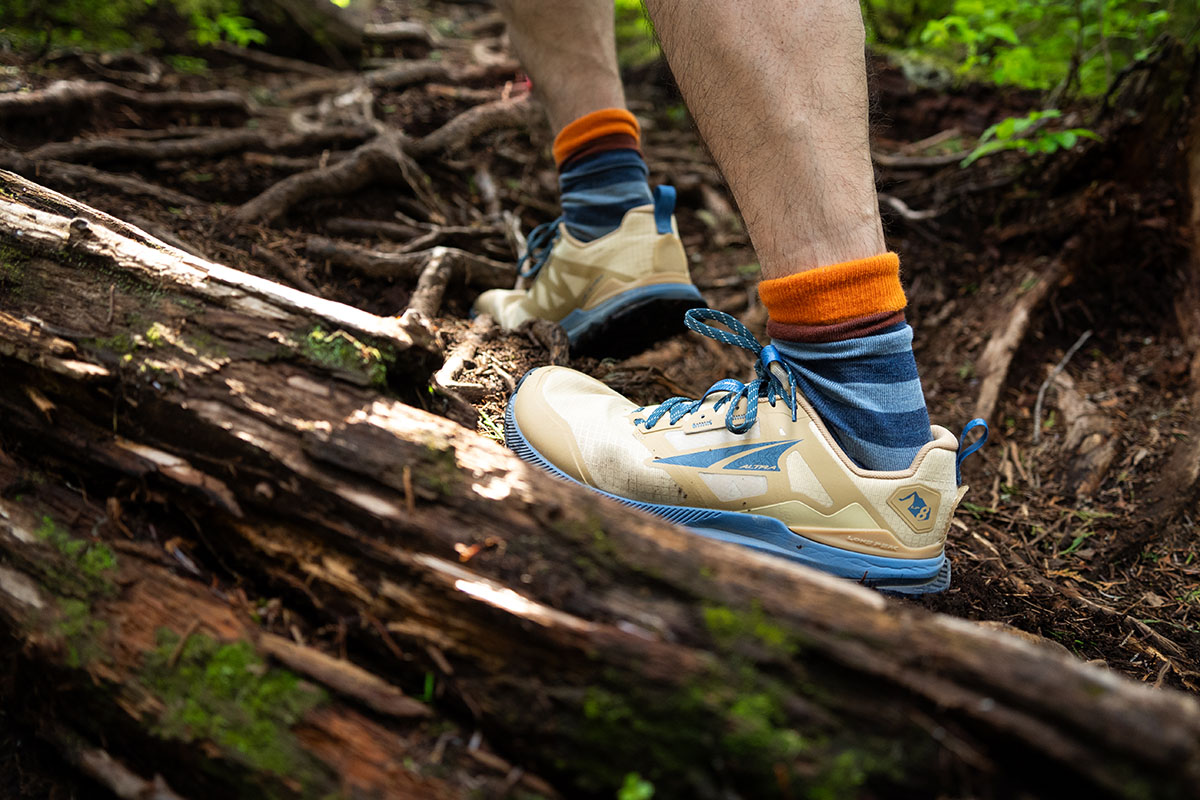
However, one notable trade-off to the Lone Peak’s long-distance comfort is that it’s not a great performer on technical terrain. As I touched on above, the roomy fit allowed my foot to slide around inside the shoe, eventually leading to hot spots and pressure points that I was unable to resolve by tightening the laces. I also found the lack of rigidity to be problematic, requiring my foot to work harder on steep uphills (this was especially noticeable under the weight of a full backpacking pack). Finally, while Altra’s Stoneguard insert adds some stiffness and shock absorption underfoot, the thin rubber design is no match for a true rock plate, and I found myself paying close attention to my footing to avoid feeling jagged rocks poke through.
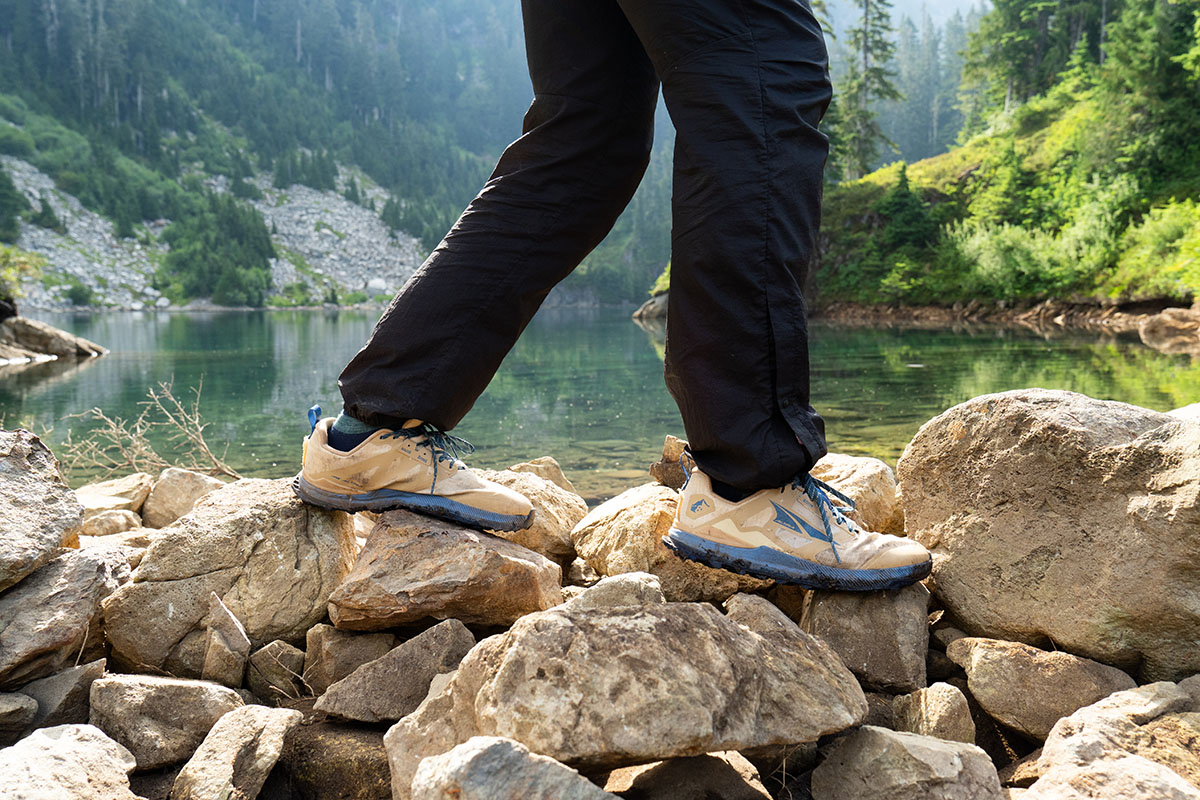
While more abrasion-resistant than past generations (more on this below), the Lone Peak 8’s ripstop mesh upper proved plenty breathable during my warm-weather testing. Even on hot summer days in full sun, my feet never grew overly warm or sweaty, and I arrived at camp each night with dry hiking socks. I was initially worried that the porous mesh would let in debris or dirt throughout long days on the trail but was quickly proven wrong: The shoes kept my feet protected despite their well-ventilated build.
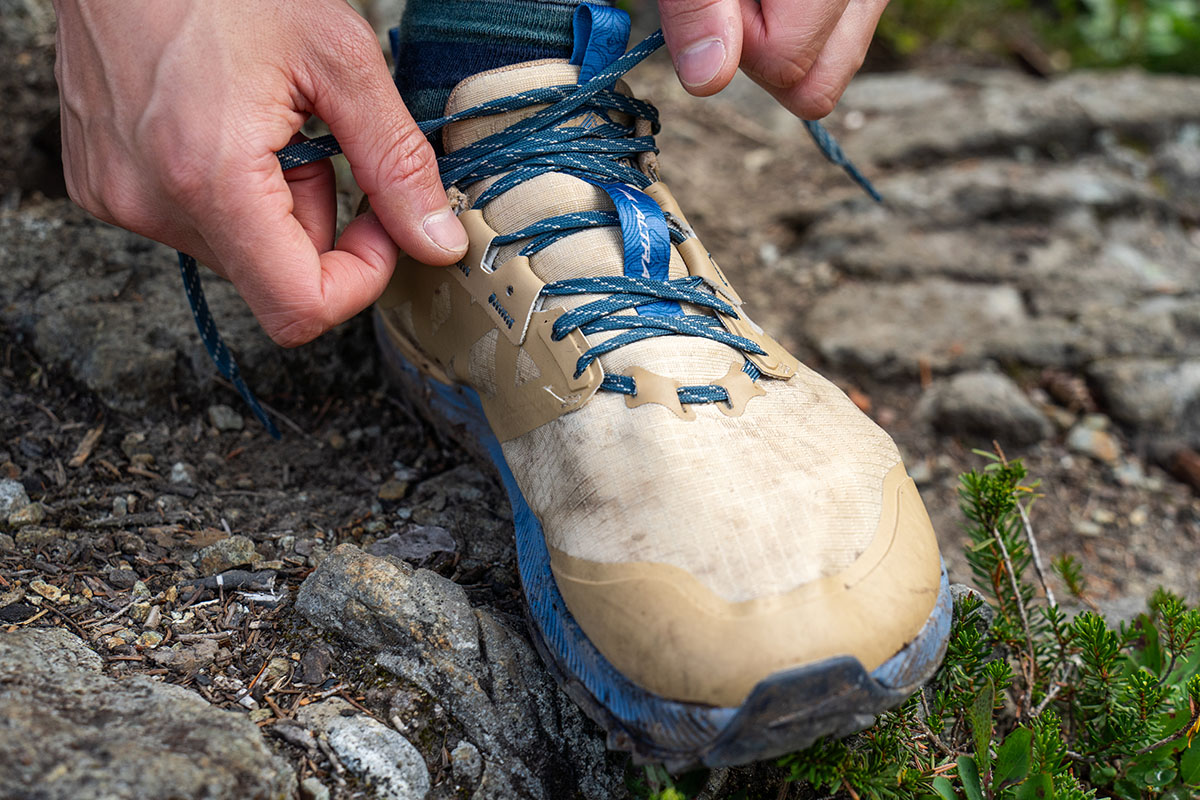
Another benefit to the Lone Peak’s breathable construction is that they dry very quickly after a submersion. On one early-season hike, I had to cross some late-summer snowfields, post-holing to my knees and occasionally dipping a foot in the creek hidden below. Despite my feet getting soaked, the mesh upper didn’t grow noticeably heavy or waterlogged and effectively dumped all the excess moisture as I continued on dry ground. It’s worth noting that Altra offers a waterproof version of the shoe called the Lone Peak All-Wthr Low 2, but expect sacrifices in ventilation and drying time. In my experience, non-waterproof trail runners are the better match for most, and I appreciate that Altra included a hook-and-loop tab for attaching gaiters on particularly wet or muddy outings.
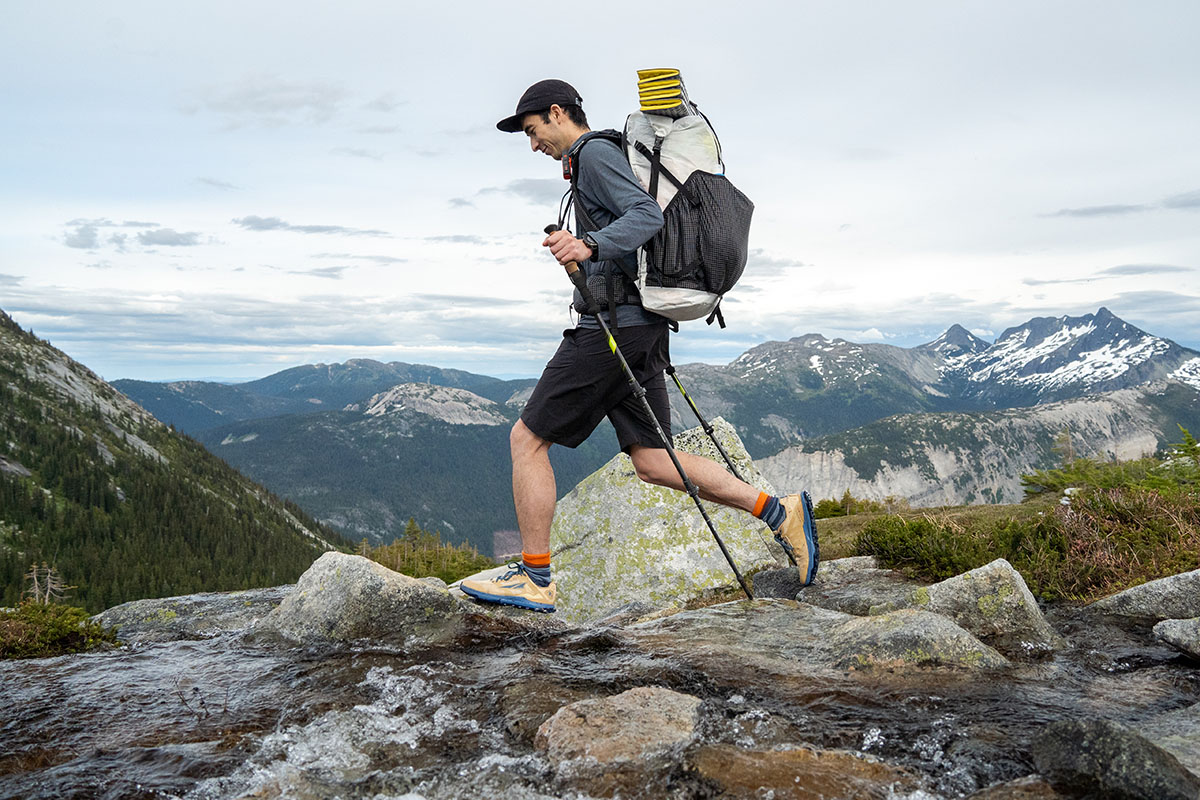
The Lone Peak has received mixed reviews over the years in terms of durability and longevity, but Altra took some steps to address that with the latest version. The biggest changes were to the upper, which is now made with ripstop mesh that’s notably more abrasion-resistant than the "air mesh" used in past iterations. Throughout testing, my pair has effectively fended off snags and tears with virtually no wear to show for it, although I’m hesitant to comment on the shoes’ long-term durability since I’ve only put about 100 miles on them so far (for reference, many thru-hikers wear a single pair of shoes for hundreds of miles).
However, I do have some concerns about potential failure points with the Altra Lone Peak 8. First, there are several small edges along the upper that strike me as prone to catching and ripping over time, like where the laces connect at each side. This shouldn’t be an issue for those who stick to well-groomed trails, but activities like bushwhacking and scrambling will likely result in a significantly reduced lifespan. It’s also worth noting that the outsole has worn down faster than expected on my pair, although that’s not too surprising given the softer rubber compound.
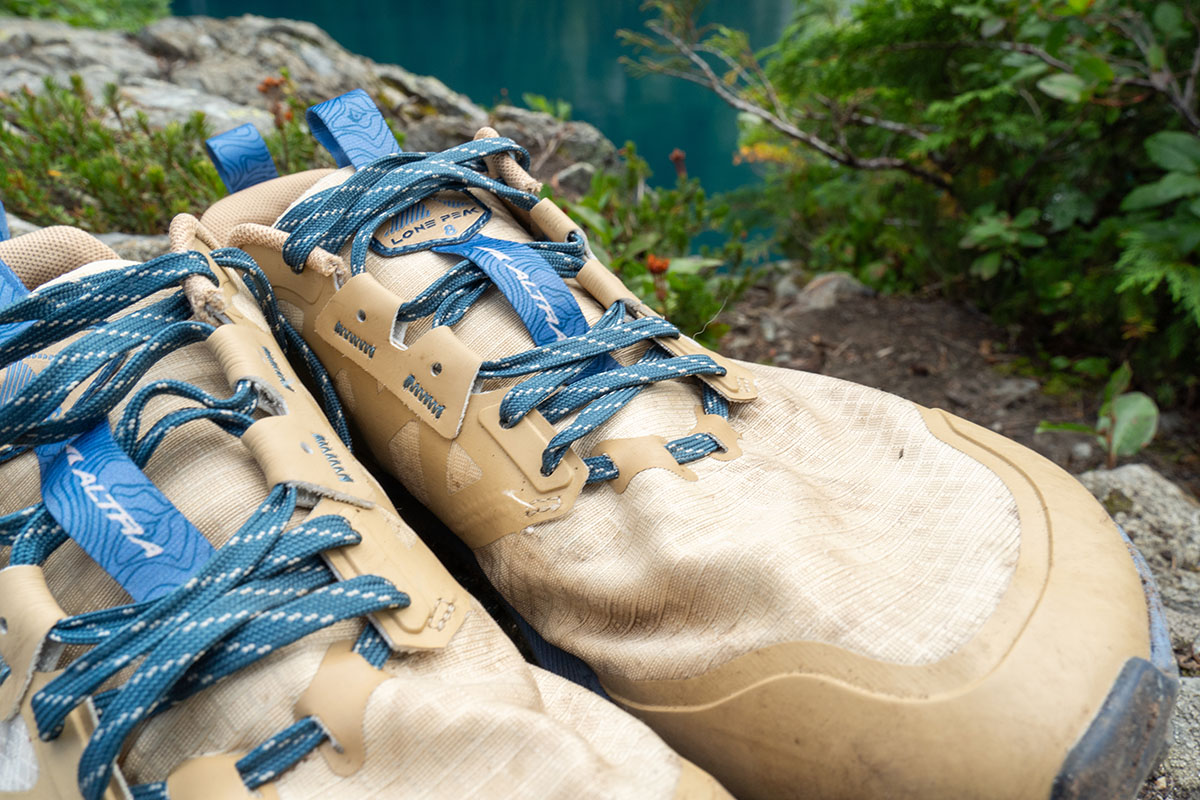
I found the Lone Peak 8 to be spot-on lengthwise in my usual men’s size 10, but the added width did take some getting used to. To be fair, I have relatively narrow feet and often turn to European brands like La Sportiva for their lower-volume fit, but over time, I came to appreciate the generous shape of the Lone Peak. I do wish it were easier to lock down my foot on technical terrain—cinched as tightly as possible, there was still an undeniable sloppiness that I was unable to resolve. But overall, I think a lot of hikers—especially those who enjoy covering a lot of ground quickly—will be pleased with the Lone Peak’s accommodating fit. Altra also offers dedicated wide sizes of the shoe, which I would only recommend for those with particularly high-volume or hard-to-please feet.
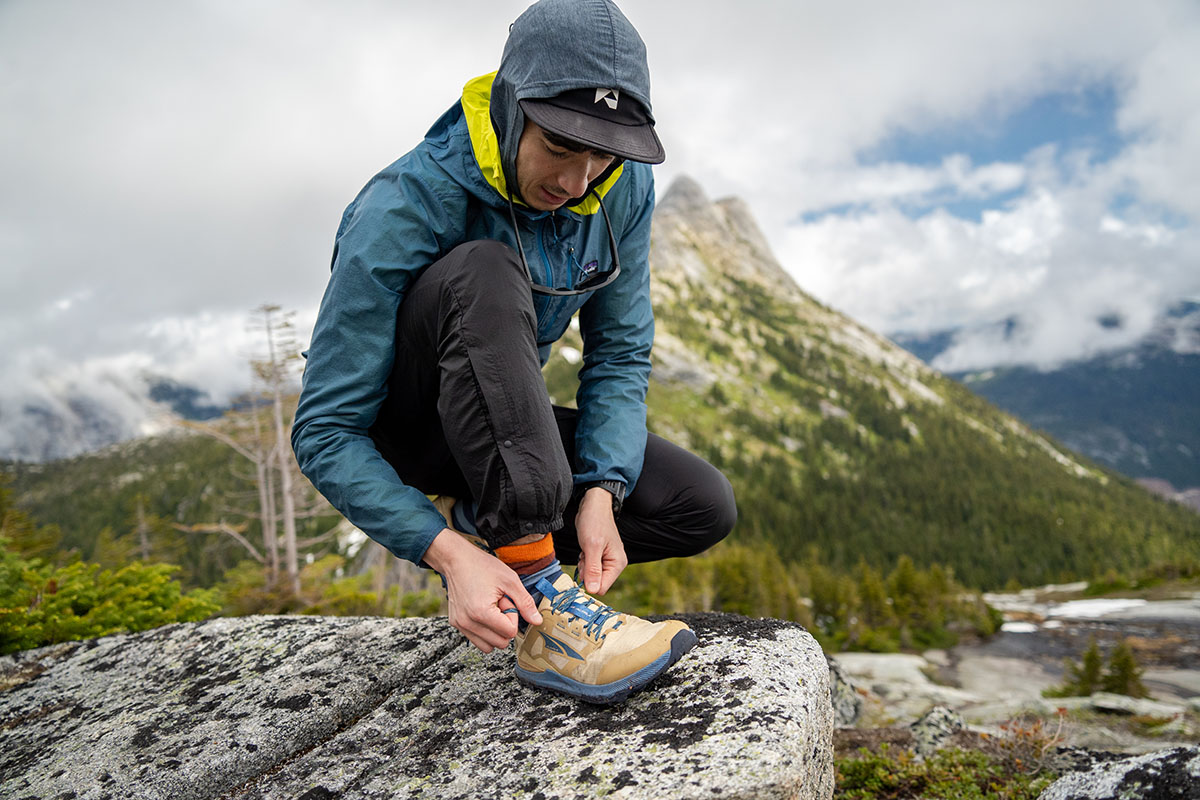
We tested the men’s Lone Peak 8 for this review, and Altra sells the shoe in a women’s version for the same price. The two shoes are largely identical apart from colorway and sizing options and a slight weight reduction, with the women’s Lone Peak 8 checking in at 1 pound 2.3 ounces per pair. As I mentioned above, Altra also offers the low-top shoe in a waterproof version called the Lone Peak All-Wthr Low 2, which costs $20 more than the non-waterproof model, as well as a more everyday-friendly variation called the LP Alpine. And for those looking for additional support, the non-waterproof Lone Peak Hiker 2 and waterproof Lone Peak All-Wthr Mid 2 are similar to their low-top counterparts but with over-the-ankle coverage. We took the women’s Lone Peak Hiker 2 to Patagonia for testing last year, and you can check out our in-depth review here.
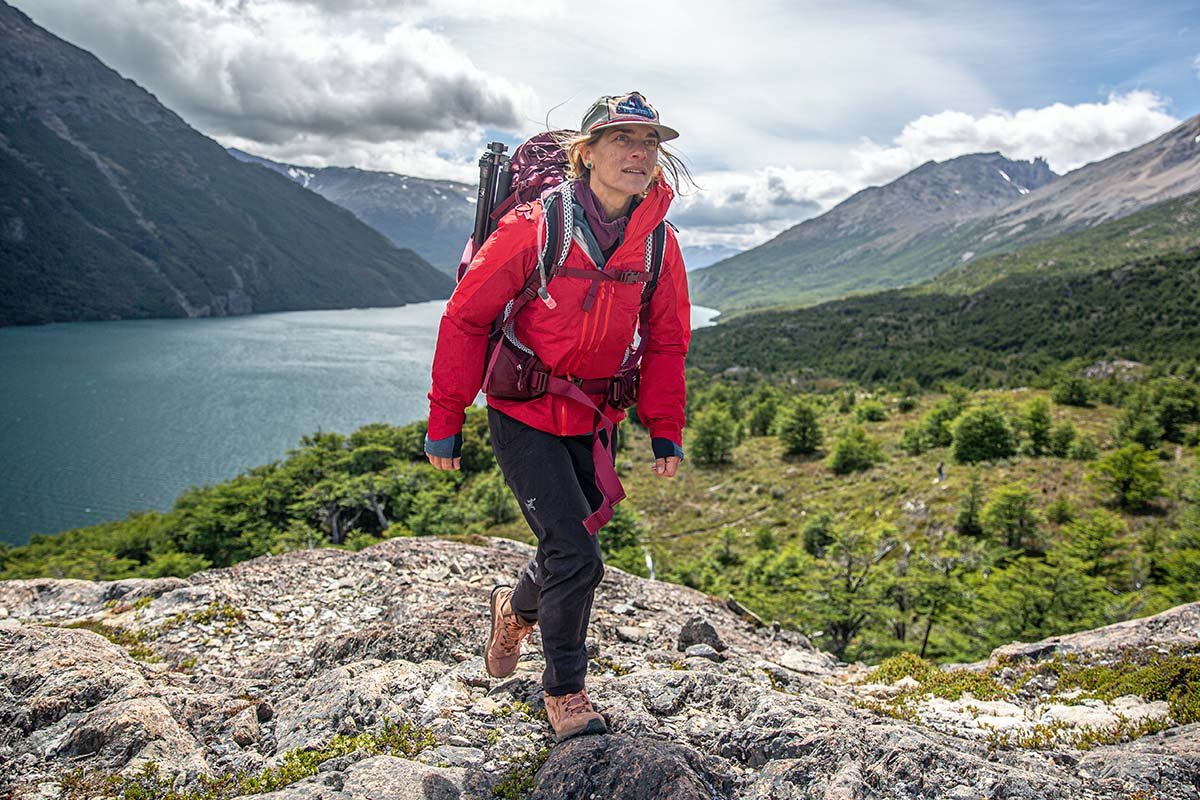
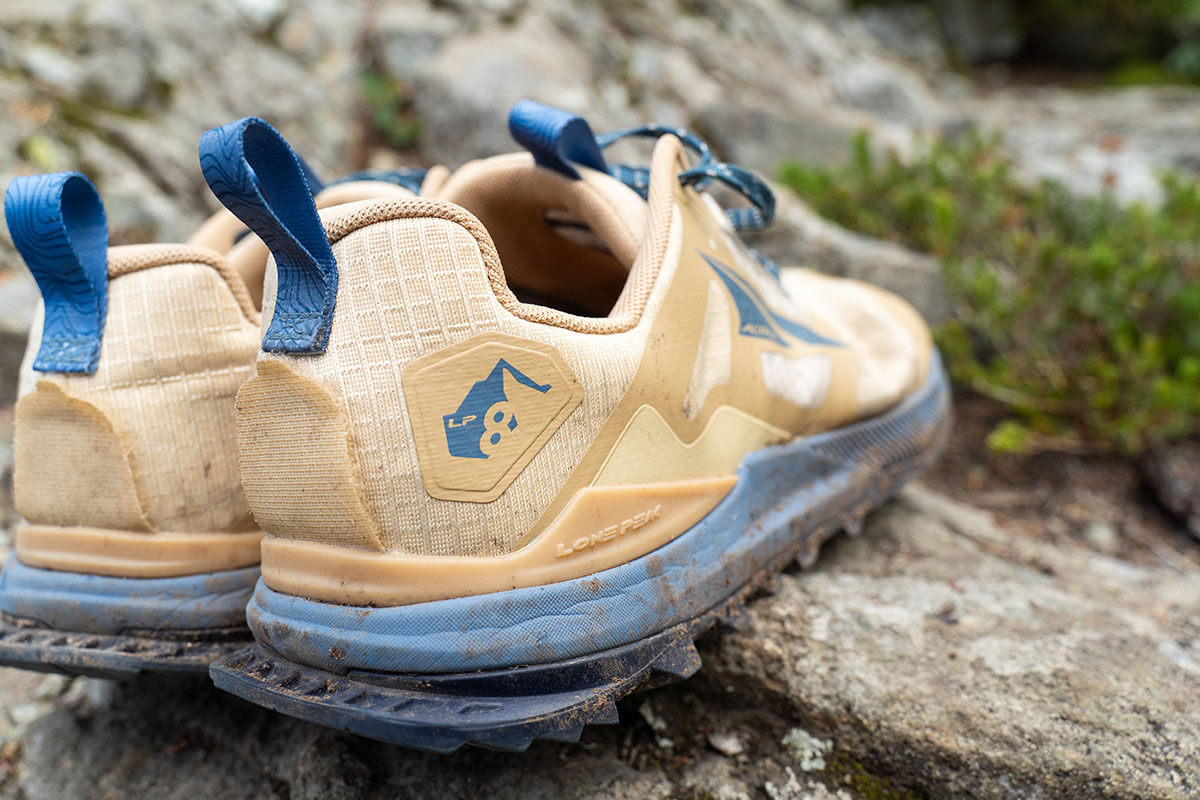
| Shoe | Price | Weight | Stack Height | Drop | Lugs |
|---|---|---|---|---|---|
| Altra Lone Peak 8 | $140 | 1 lb. 5.4 oz. | 25mm forefoot / 25mm heel | 0mm | 3.5mm |
| Altra Olympus 6 | $175 | 1 lb. 10.5 oz. | 33mm forefoot / 33mm heel | 0mm | Unavailable |
| Altra Timp 5 | $155 | 1 lb. 3.6 oz. | 29mm forefoot / 29mm heel | 0mm | Unavailable |
| Brooks Cascadia 18 | $140 | 1 lb. 6.2 oz. | 12mm forefoot / 20mm heel | 8mm | 4.5mm |
| Hoka Speedgoat 6 | $155 | 1 lb. 3.6 oz. | 35mm forefoot / 40mm heel | 5mm | 5mm |
The Lone Peak 8 is one of the most ubiquitous trail running shoes on the market and a great match for long-distance hikers focused on covering ground quickly. That said, Altra has several different options to choose from depending on your preferences and objectives, and their Olympus 6 wins out in both cushioning and grip. Compared to the Lone Peak, the Olympus offers an additional 8 millimeters of padding underfoot for a cushier and more forgiving ride, along with a Vibram Megagrip outsole with deeper lugs for biting into wet or soft ground. The Olympus is heavier than the Lone Peak by around 5 ounces per pair and will run you an additional $35, but some may find the upgrades in traction and plushness worth that trade-off. We prefer the lighter and more connected feel of the Lone Peak, but it’s largely a matter of personal preference.
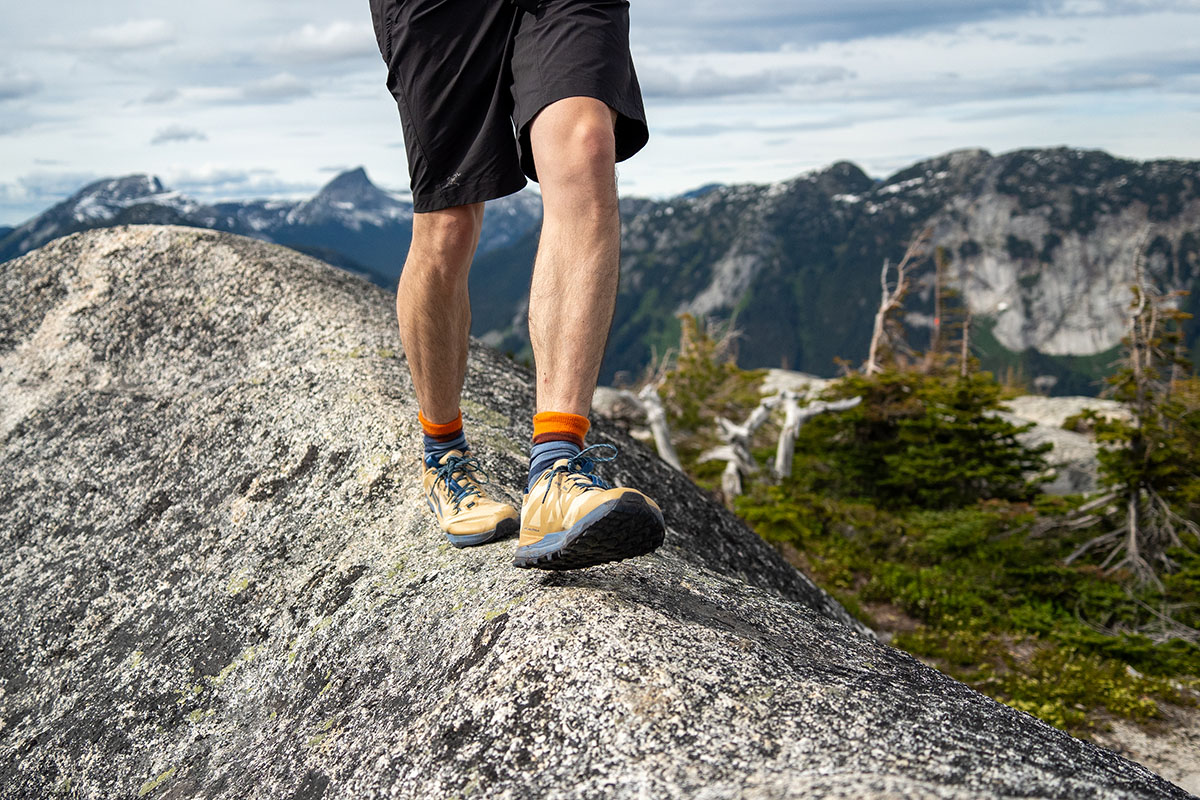
Next up is another versatile Altra design: their Timp 5. With 29 millimeters of cushioning underfoot and a price tag of $155, the Timp nicely bridges the gap between the Lone Peak and Olympus 6 above. It also stands out as the lightest option among the trio at 1 pound 3.6 ounces per pair, offers better grip than the Lone Peak thanks to its Vibram Megagrip outsole, and boasts Altra’s Ego Max midsole foam that’s more responsive than the Lone Peak’s basic Ego compound. The standard mesh upper lacks the abrasion resistance you get with the Lone Peak’s ripstop mesh design, but overall, the Timp is a well-balanced design for both running and hiking. If you anticipate doing more of the latter and stick to mostly established trails, we think it's worth saving with the Lone Peak.
Moving away from Altra’s lineup, Brooks’ Cascadia is another consistent thru-hiker favorite. Now in its 18th iteration, the Cascadia stacks up very competitively to the Lone Peak. In parsing out the differences, the Brooks is the more technically capable option with additional protection underfoot and better stability. In terms of fit, the two feature roomy toe boxes that are great for accommodating swollen toes (the Altra is more spacious), but the Cascadia locks things down more at the midfoot and heel. A final key difference is the Cascadia’s 8-millimeter drop compared to the Lone Peak's zero-drop shape, which lends a more agile and responsive feel (although the “natural” profile of the Altra is a big reason it has such a loyal following). In the end, we think the Brooks is the better all-rounder for most hikers, but the Altra gets the edge for those with particularly hard-to-please feet.

A final alternative to consider is Hoka’s Speedgoat 6, which is another popular choice among fast-and-light hikers but with a notably different personality than the Altra. First, while the Lone Peak’s midsole is relatively dull and sluggish, the Hoka boasts thick but supportive cushioning that provides great responsiveness. Some may find the tall stack height (35mm at the forefoot and 40mm at the heel) to feel a little tippy and off-balance, especially when navigating challenging terrain like boulder fields, but the advantage is additional protection and isolation underfoot. You also get a more capable Vibram Megagrip outsole with aggressive lugs that perform well on most surfaces, along with a reinforced mesh upper that should hold up similarly well over time. In the end, each shoe has its strong suits, and a final decision will come down to how you prioritize all-day comfort versus technical performance.